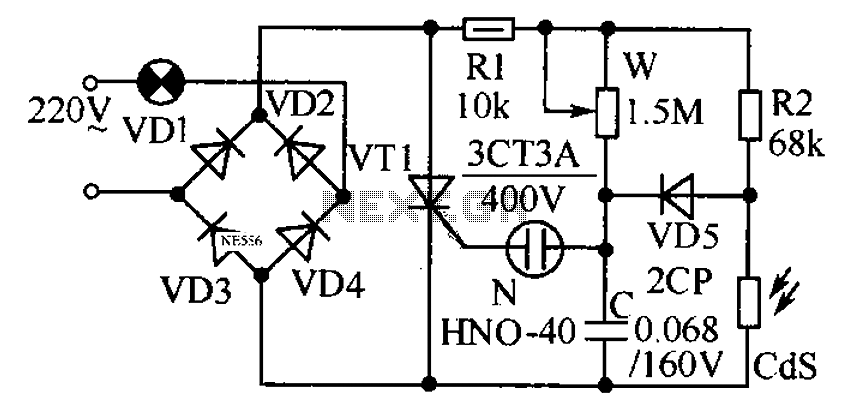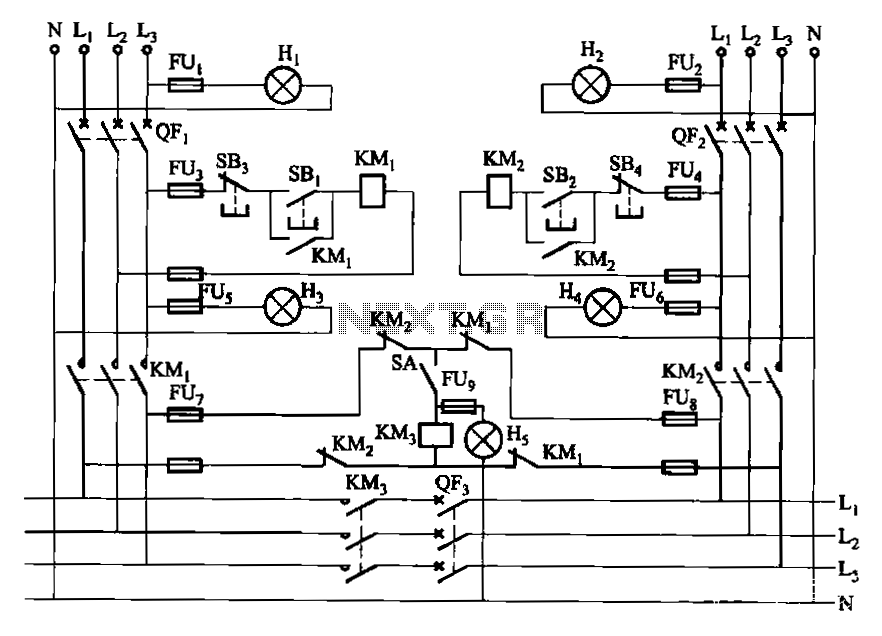
Single Op-Amp 3 Band Equalizer circuit

This is a 3 Band Equalizer circuit designed to control the treble, midrange, and bass frequencies. The circuit utilizes a single operational amplifier (op-amp).
The 3 Band Equalizer circuit serves to enhance audio signals by allowing users to adjust specific frequency ranges according to their preferences. The design typically comprises three adjustable filters, each dedicated to one of the frequency bands: treble, midrange, and bass.
The operational amplifier is configured in a feedback loop, enabling it to amplify and modify the audio signal. Each band is controlled by a potentiometer, which adjusts the gain of the op-amp for that specific frequency range. The treble control affects the higher frequencies (typically above 3 kHz), the midrange control adjusts frequencies around 1 kHz to 3 kHz, and the bass control influences lower frequencies (below 1 kHz).
The circuit may include passive components such as resistors and capacitors to define the cutoff frequencies of the filters. By tuning these components, the desired frequency response can be achieved. The output of the op-amp can be connected to a speaker or further audio processing stages, allowing for a customized listening experience.
In practical applications, the 3 Band Equalizer circuit can be integrated into audio devices such as mixers, amplifiers, or standalone equalizers, enhancing sound quality and providing users with the ability to tailor audio output to their liking. Proper layout and grounding techniques should be employed to minimize noise and ensure optimal performance of the circuit.This is a 3 Band Equalizer circuit. This circuit is made to control the treble, middle and bass range. This circuit uses a single op-amp. With single op-amp we. 🔗 External reference
The 3 Band Equalizer circuit serves to enhance audio signals by allowing users to adjust specific frequency ranges according to their preferences. The design typically comprises three adjustable filters, each dedicated to one of the frequency bands: treble, midrange, and bass.
The operational amplifier is configured in a feedback loop, enabling it to amplify and modify the audio signal. Each band is controlled by a potentiometer, which adjusts the gain of the op-amp for that specific frequency range. The treble control affects the higher frequencies (typically above 3 kHz), the midrange control adjusts frequencies around 1 kHz to 3 kHz, and the bass control influences lower frequencies (below 1 kHz).
The circuit may include passive components such as resistors and capacitors to define the cutoff frequencies of the filters. By tuning these components, the desired frequency response can be achieved. The output of the op-amp can be connected to a speaker or further audio processing stages, allowing for a customized listening experience.
In practical applications, the 3 Band Equalizer circuit can be integrated into audio devices such as mixers, amplifiers, or standalone equalizers, enhancing sound quality and providing users with the ability to tailor audio output to their liking. Proper layout and grounding techniques should be employed to minimize noise and ensure optimal performance of the circuit.This is a 3 Band Equalizer circuit. This circuit is made to control the treble, middle and bass range. This circuit uses a single op-amp. With single op-amp we. 🔗 External reference





